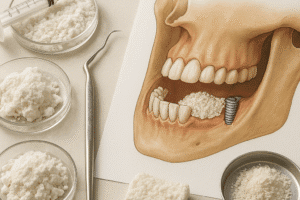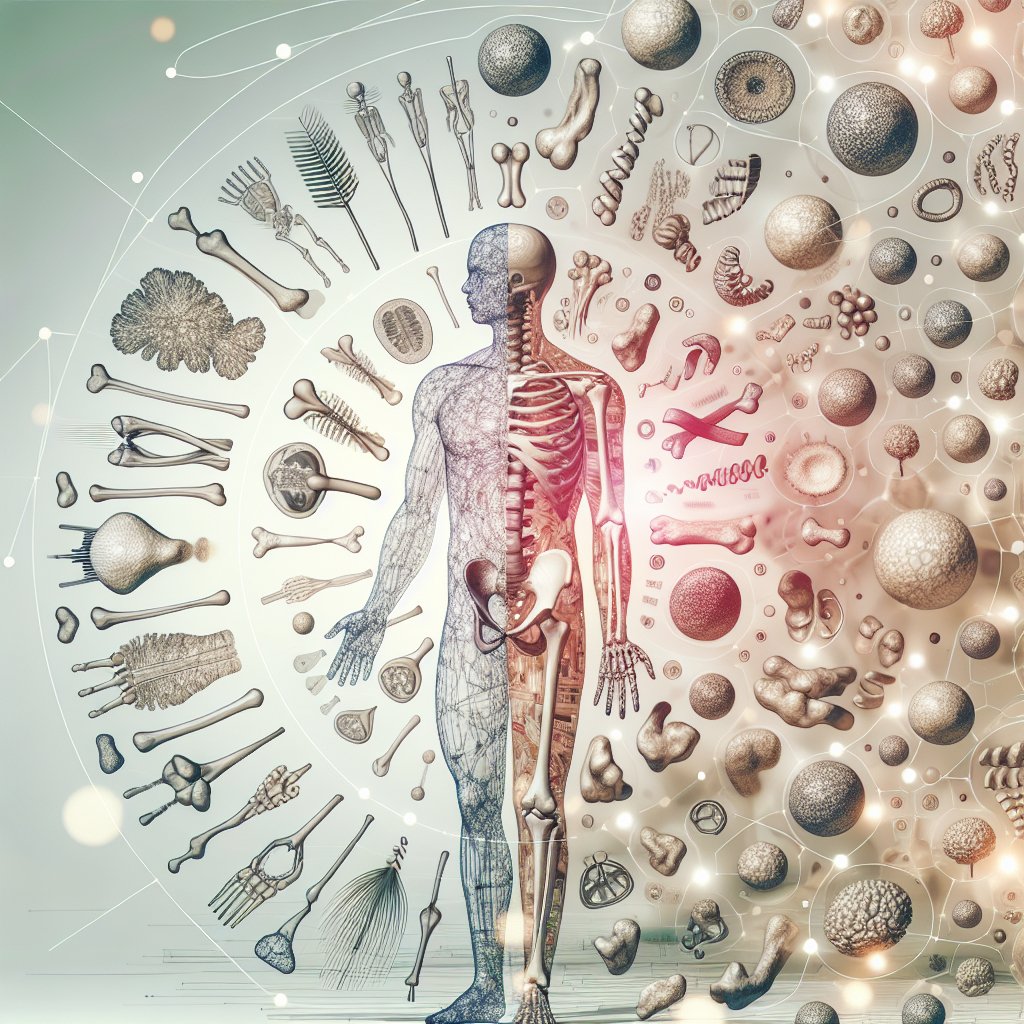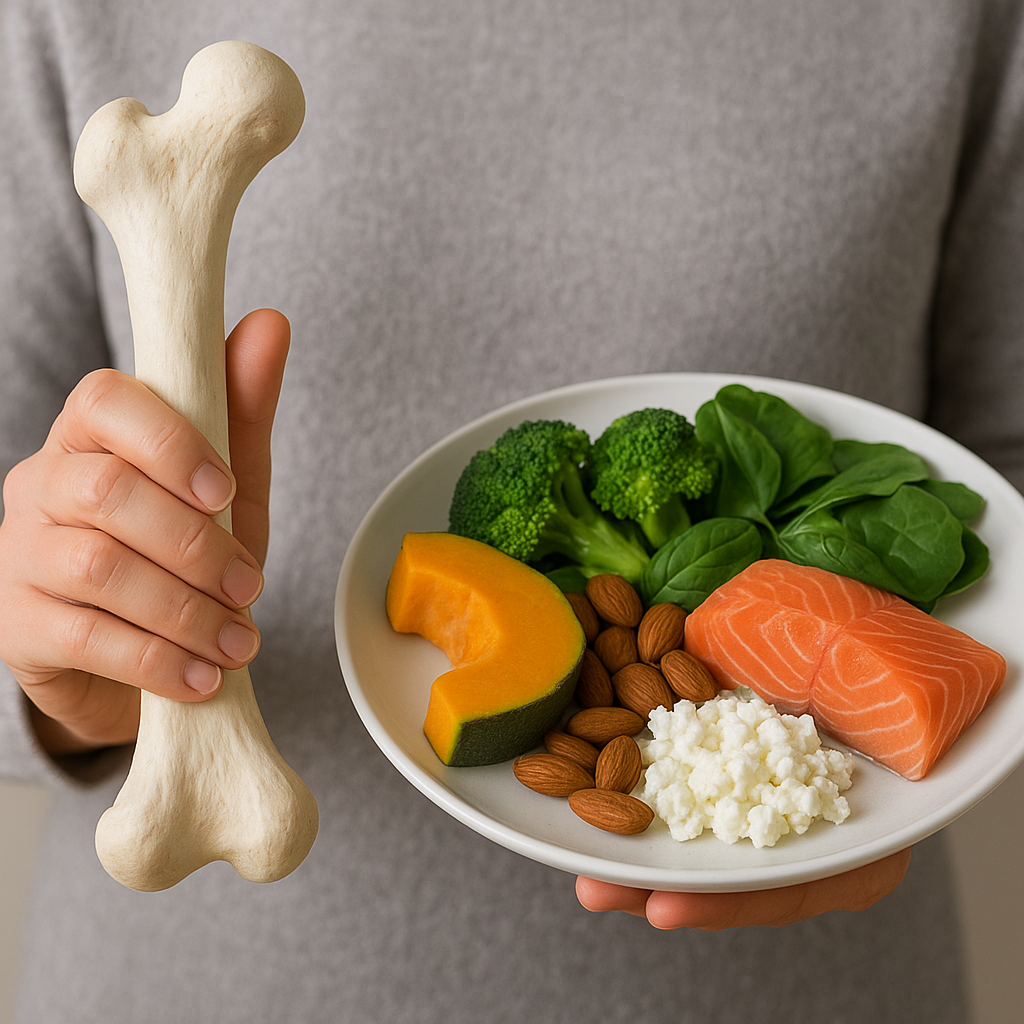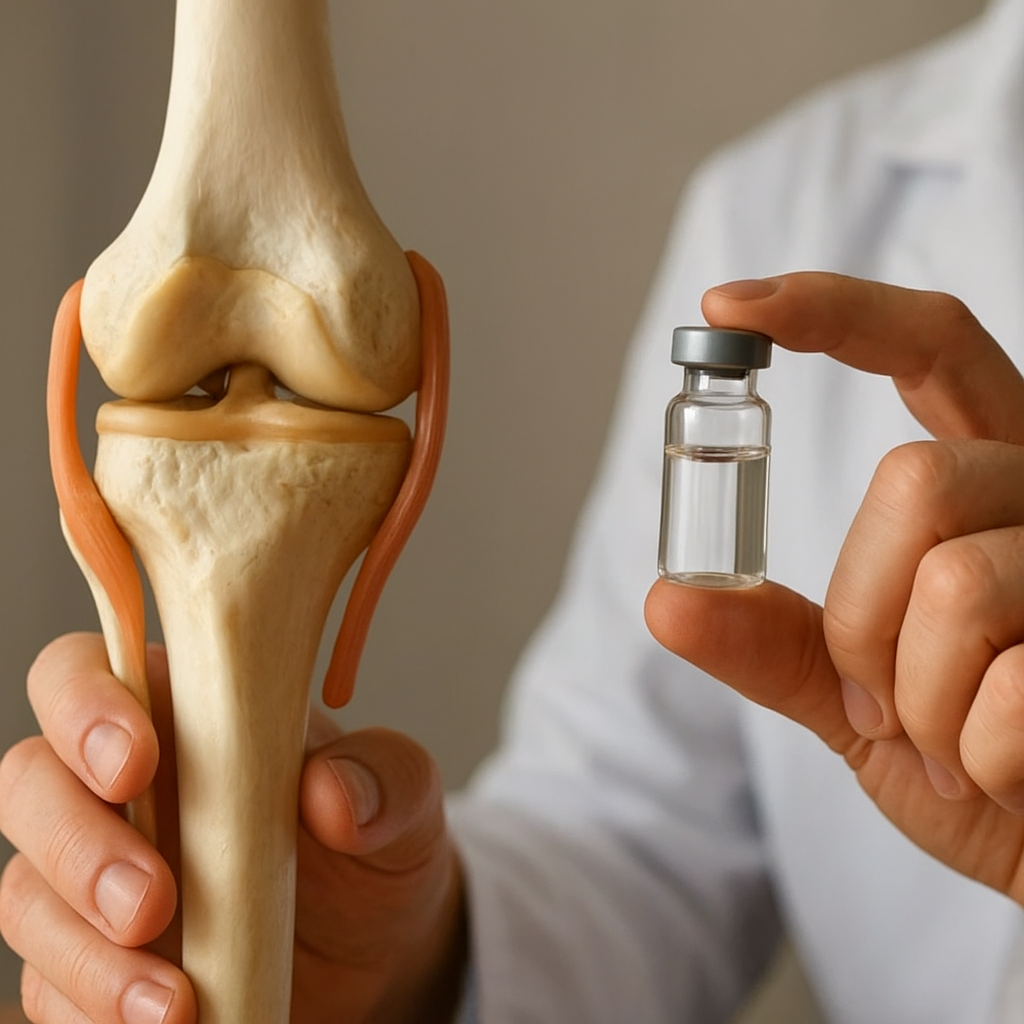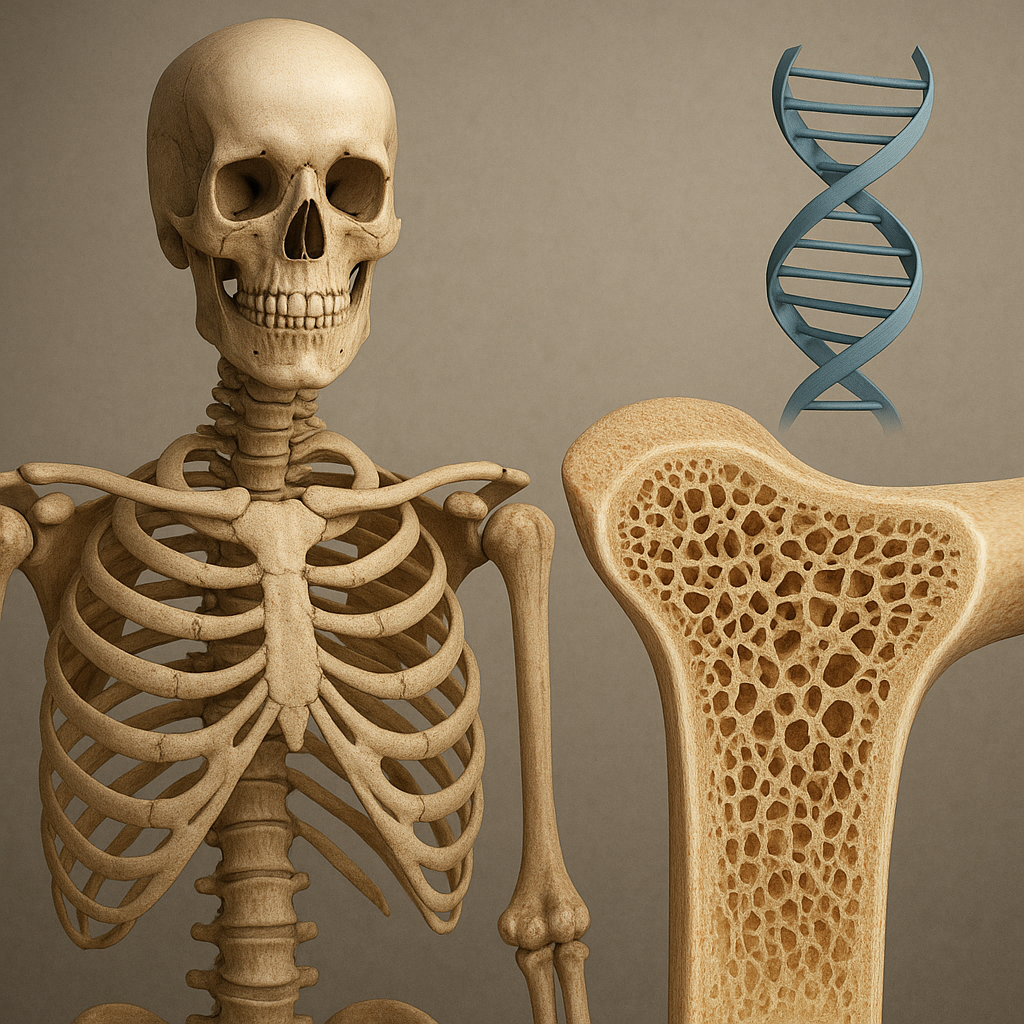The role of genetics in bone structure and health is a fascinating area of study that has garnered significant attention in recent years. Understanding how our genetic makeup influences the development, strength, and overall health of our bones can provide valuable insights into preventing and treating various bone-related conditions. This article will explore the intricate relationship between genetics and bone health, examining how hereditary factors contribute to bone density, structure, and susceptibility to diseases such as osteoporosis.
Genetic Factors Influencing Bone Structure
Bone structure is a complex trait influenced by a multitude of genetic factors. Research has identified several key genes that play a crucial role in bone development and maintenance. These genes are involved in various biological processes, including bone formation, remodeling, and mineralization.
Key Genes and Their Functions
Among the most studied genes related to bone health are:
- COL1A1 and COL1A2: These genes encode collagen type I, which is the primary protein found in bone. Variations in these genes can affect collagen production and, consequently, bone strength.
- VDR: The vitamin D receptor gene is essential for calcium absorption and bone metabolism. Genetic variations in the VDR gene can influence an individual’s response to vitamin D, impacting bone density.
- OSTEOPETROSIS genes: Mutations in genes associated with osteopetrosis can lead to abnormal bone density and structure, highlighting the importance of genetic regulation in bone health.
- RANK/RANKL/OPG pathway: This signaling pathway is crucial for the regulation of bone remodeling. Genetic variations in these genes can affect the balance between bone formation and resorption, influencing overall bone density.
These genes interact with environmental factors, such as nutrition and physical activity, to shape an individual’s bone structure. For instance, a person with a genetic predisposition to low bone density may still maintain healthy bones through a balanced diet rich in calcium and vitamin D, combined with regular weight-bearing exercise.
Heritability of Bone Traits
Studies involving twins and families have demonstrated that bone traits, such as bone mineral density (BMD) and bone size, have a significant heritable component. Estimates suggest that approximately 60-80% of the variation in BMD can be attributed to genetic factors. This heritability indicates that individuals with a family history of osteoporosis or fractures may be at a higher risk of developing similar conditions.
Genome-wide association studies (GWAS) have identified numerous single nucleotide polymorphisms (SNPs) associated with bone density and structure. These findings have advanced our understanding of the genetic architecture of bone health and may lead to the development of genetic tests to assess an individual’s risk for bone-related diseases.
The Impact of Genetics on Bone Health
Genetics plays a pivotal role in determining not only the structure of bones but also their health throughout an individual’s life. Understanding this relationship can help in the prevention and management of bone diseases, particularly osteoporosis, which affects millions of people worldwide.
Osteoporosis and Genetic Predisposition
Osteoporosis is a condition characterized by low bone mass and increased fracture risk. It is often referred to as a “silent disease” because it can progress without noticeable symptoms until a fracture occurs. Genetic factors significantly contribute to the risk of developing osteoporosis, with family history being one of the strongest predictors.
Research has shown that individuals with a first-degree relative who has experienced an osteoporotic fracture are at a higher risk of similar outcomes. This genetic predisposition is thought to be due to inherited variations in genes that regulate bone density and strength.
Environmental Interactions and Lifestyle Factors
While genetics plays a crucial role in bone health, it is essential to recognize the impact of environmental factors and lifestyle choices. Nutrition, physical activity, and hormonal changes can all influence bone density and overall skeletal health.
- Nutrition: Adequate intake of calcium and vitamin D is vital for maintaining bone health. Genetic predispositions may affect how well an individual absorbs these nutrients, making dietary choices even more critical.
- Physical Activity: Weight-bearing exercises stimulate bone formation and increase bone density. Individuals with a genetic predisposition to low bone density can benefit significantly from regular physical activity.
- Hormonal Factors: Hormones such as estrogen and testosterone play a significant role in bone health. Genetic variations that affect hormone levels can influence an individual’s risk of developing osteoporosis.
Understanding the interplay between genetics and these environmental factors is crucial for developing effective prevention and treatment strategies for bone-related diseases.
Future Directions in Bone Health Research
The ongoing research into the genetic basis of bone health holds promise for improving our understanding of bone diseases and developing targeted therapies. Advances in genetic testing and personalized medicine may allow for more precise risk assessments and tailored interventions.
Genetic Testing and Risk Assessment
As our understanding of the genetic factors influencing bone health expands, genetic testing may become a valuable tool in assessing an individual’s risk for osteoporosis and other bone-related conditions. By identifying specific genetic markers associated with low bone density, healthcare providers can offer personalized recommendations for prevention and treatment.
Targeted Therapies and Interventions
Future research may also lead to the development of targeted therapies that address the underlying genetic causes of bone diseases. For example, gene therapy approaches could potentially correct genetic mutations that contribute to conditions like osteogenesis imperfecta or osteoporosis.
Additionally, pharmacogenomics—the study of how genes affect a person’s response to drugs—may play a role in optimizing treatment strategies for individuals with genetic predispositions to bone diseases. By tailoring medications based on an individual’s genetic profile, healthcare providers can enhance treatment efficacy and minimize side effects.
Conclusion
The role of genetics in bone structure and health is a complex and multifaceted area of research that continues to evolve. Understanding the genetic factors that influence bone density, structure, and susceptibility to diseases like osteoporosis is crucial for developing effective prevention and treatment strategies. As research advances, the integration of genetic testing and personalized medicine may revolutionize the way we approach bone health, ultimately leading to improved outcomes for individuals at risk of bone-related conditions.





